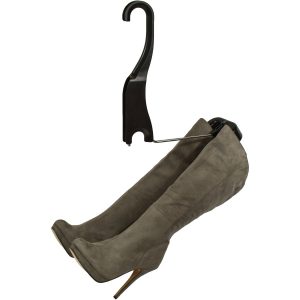We all have plenty of clothes hangers in our homes. This post will explore the different types of hangers and how to use each; you’ll have an easier time using them and organizing your closet if you match the hanger to the appropriate garment. So while generic plastic hangers can do an acceptable job holding most types of clothing, your clothes will last longer and your closet will be more organized if you follow the tips below.
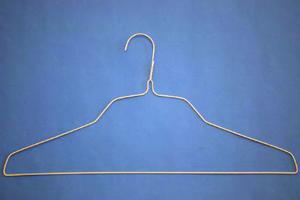
We’ll start with wire hangers. And while we don’t feel as strongly about them as one famous movie scene depicts, they’re generally intended to be disposable. Meaning, for the trip home from the dry cleaners. It’s convenient and quick to simply leave your items on wire hangers when you bring them home, and they can last a while when used to hang very lightweight items like a t-shirt. But it’s not a great idea to use them on a permanent basis.
Clothes with any significant weight will bend the wire hangers out of shape, and that will then bend your clothes out of shape – which you definitely don’t want.
If you have a huge amount of wire hangers and are looking to get rid of them, don’t just throw them in the trash: Many dry cleaners will take back your wire hangers. Gather up the ones you may have lingering around and drop them off the next time you make your dry cleaning run.
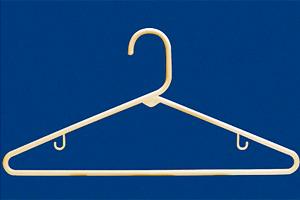
Next up: typical plastic hangers. They’re great for hanging kids’ clothing, especially when the kids are growing rapidly and have lots of inexpensive clothes they’re quickly growing out of. And while plastic hangers work reasonably well for blouses, shirts, and simple dresses for both high-quality children’s and most types of adult clothes, they can snap under too much weight. They can also get bent out of shape under the weight of heavier items. Bending will cause odd pressure points and stretch fabrics, leaving you with a misshapen piece of clothing. Use plastic hangers sparingly, and not for heavier items.
When it comes to higher quality items, delicate items, and items you’d like to keep around for a while, you’re much better off using carefully selected hangers that will provide optimal support without the risk of damage. Using the correct hanger type will also help minimize the likelihood of having to re-iron clothes before you wear them.
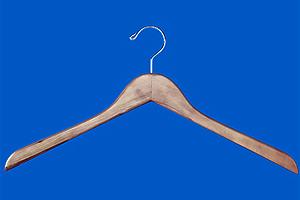
Wood hangers are excellent for coats, blazers, heavier pants, and anything with a bit of heft to it. They’re sturdy and thus don’t bend out of shape, and tend to look nice. Plus, higher-end woods like cedar can fight odors and deter insects.
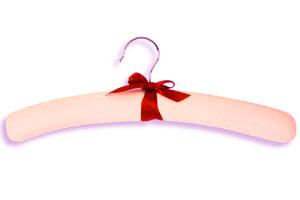
For delicate, light items that are made from fabrics like silk or chiffon, use padded hangers. These won’t work for heavier clothes, which will slip right off. But for delicate items, the pads are perfect: They make it less likely that the fabric will be damaged while taking the item on and off the hanger.
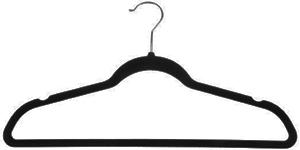
Velvet hangers, in which the body of the hanger is covered in velvet (or velvet-like material) are also great for hanging delicate items, as the material provides a non-slip surface. That reduces pressure points and makes items less likely to slip off. Velvet hangers with indentations where you can position straps are ideal for any clothing with thin straps. Make sure that you don’t hang wet or damp items on these hangers, however – the color of the material may transfer onto your clothing. especially those that may contain delicate fabrics and easily stretched fabrics.
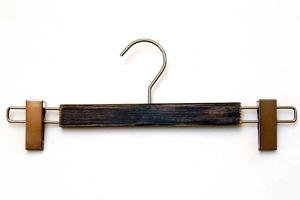
Clip hangers are great for holding pants and skirts in place while minimizing wrinkles. These are great for lighter items, and a bit simpler than using a hanger with a locking bar, as you’re simply clipping the item with the clips.
Clip hangers will either have a set of clips on each side of the hanger, or one bar that clamps onto the item that you’re hanging. The bar will help you avoid clip marks, but won’t support heavier items, as their weight will cause the item to pull downward and slip off.
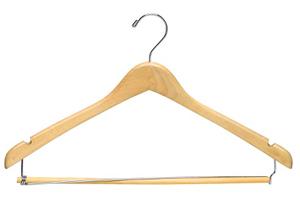
Hangers with a locking bar are helpful for preventing items from slipping off: Pants, for example, can be folded neatly across the bar, which will secure the clothing item in place. That will help lessen wrinkles and will save you more space than if you were to hang your folded pants on regular plastic hangers. Plus, you can use this type of hanger to hang a suit jacket and pants together, which saves you time trying to track down matching items.
You can also use this hanger type to hang scarves and other accessories by using the locking bar.
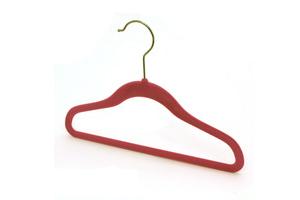
Flocked hangers are similar to padded hangers in that they are covered with a soft material, but have a hard interior and a shape more similar to a conventional hanger. You can use these for various types of outerwear and other heavier items. Additionally, these have a thin profile, which makes them more space efficient than other types of hangers.
Use different types of hangers to help reclaim your closet from clutter, and to preserve your clothing for years to come. Utilizing the right type of hanger for each article of clothing also makes it easier to sort and organize your closet, notice stains or other damage, and cut down the time you spend with an iron.

